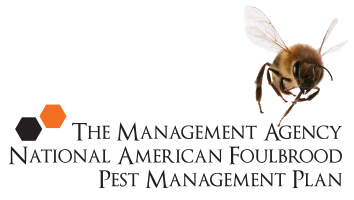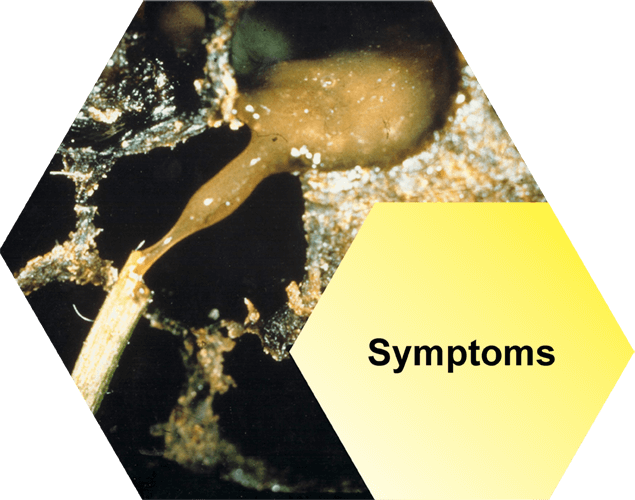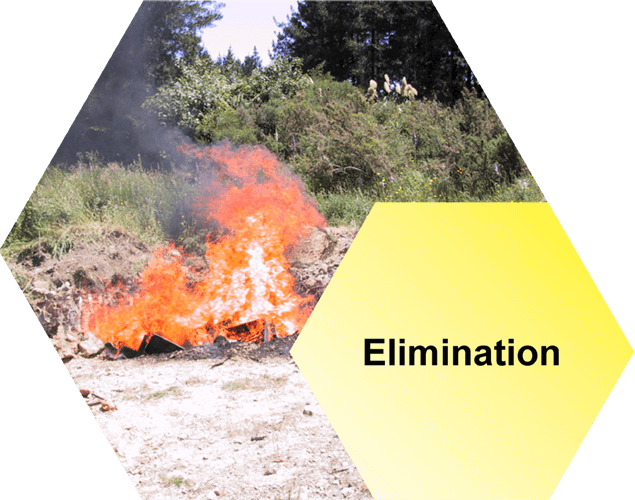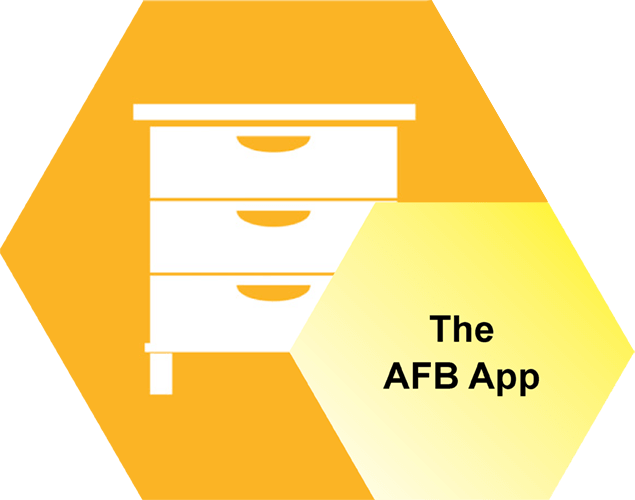Holes in cell cappings
Compare holes in cell cappings

Even though initially there may be no visible change in the colour of the capping of an infected cell, worker bees can still identify a problem within, and will chew holes in the capping before removing the contents of the cell (Fig. 10).
The holes can usually be distinguished from holes in the unfinished capping of healthy cells (Fig.11). The holes in infected cell cappings have a more irregular appearance.
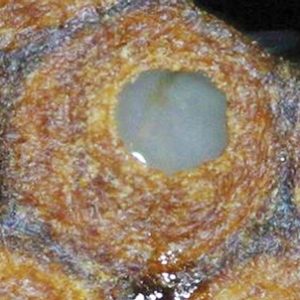
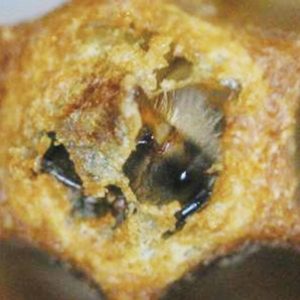
Holes will also be created in healthy cells when the young adult worker bees chew apart the cappings to release themselves from cells. These holes will also appear irregular in appearance (Fig. 12), but can be easily distinguished from infected cells since a live adult bee will be found underneath the capping.
Videos
Our videos cover everything from your legal obligations to how to recognise AFB, collecting cell and bee samples and more.
Symptoms
There’s a lot of good information here, telling you everything you need to know about recognising AFB: the visual symptoms, smell of AFB and more.
Inspection and Diagnosis
Successfully eliminate AFB by telling the difference between symptoms of AFB and other brood diseases in the hive. We tell you the best methods for inspecting your hives.
The Law
New Zealand beekeepers have a number of legal obligations that must be met regarding AFB disease. Read the shortened list in summary, here.
Elimination
Most hives become infected because bees, honey or equipment have been put into a hive from another hive that is infected with AFB. Lower your chances of an AFB infection by reading this section.
AFB Recognition Course Info
Find out when the next AFB Recognition and Competency Courses, or Refresher Courses are available. These are held throughout the year in various New Zealand locations across the South Island and North Island.
The AFB App
Follow the link below to open the App. Once open to save to your device you need to bookmark the URL on your phone so you can find it easily again. Please click here to open.
